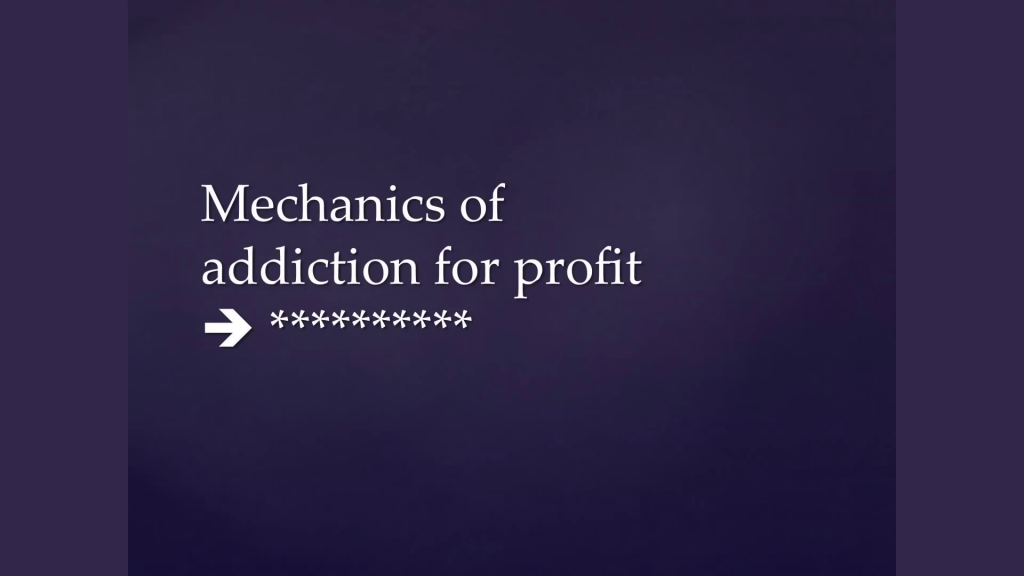So, I have no idea what I’m doing. This might be interesting to people. I hope it is. It might not. If it isn’t, you can just tune out for a little bit. It’s interesting to me. I’m talking about the psychological demands of technology. It’s actually going to be a bit broader than what Steve said because I tend to be more interested the broader you go, because I’m a little academic.
That’s me, in case you don’t know. It’s not particularly interesting. But you will notice, though, if you pay attention to me in any venue, is you’ll see a lot of this, and you’ll see a lot of this. And less frequently but more expensively, you’ll see a lot of this.
There are two things about me that are important here for the topic. One is that I am geeky, which means I tend to believe that facts win. The other is that I’m an only child, which means I tend to lack empathy. This is true. I speak only for myself. Other only children might have great empathy: I ain’t one of them.
I recently moved to San Francisco about a year ago to join a startup, and for other personal reasons, and I read this book called Hooked, written by some guy at Stanford. It’s mainly about how to use the mechanics of addiction for profit, and how to build the mechanics of addiction in products. I have a particular view of that. It’s starred out. That’s how I feel about it.

Somewhere buried in this book, as a tertiary sub-point of some other point that was subliminal to some other thing, he talks about Alcoholics Anonymous. Now, being an only child and lacking empathy, I have an inherent difficulty in understanding support groups. And having never participated in one or being on the receiving end of one makes it worse. So I accept the fact that they work. There’s evidence, proof, research, that they work. I have a hard time understanding why they work, or that they should work.
So the gentleman in the book talks about the support group providing empathy and experience. These people have been there, done that, some of them are doing it at the same time. So there’s proof that there’s a next step and that the next step is valid and it can be achieved. But then they also provide positive reinforcement to help you get to the next step, and support. Both these things, leaning on the other points about me lacking empathy, have been confusing to me my whole life.
But I read this little paragraph in this book about Alcoholics Anonymous, which reminded me of this book that I read a long time ago. And in this book this particular researcher makes the point that the source of confidence, the…if you think of it as the biological or the psychophysical source of confidence is from efficacy. You do things when you’re really little and your success in doing things, thus you have a sense of efficacy, that sense of efficacy translates into confidence, which is where the psychophysical basis of self-esteem comes from.
So that made me think about what happens when you try to do something new. Generally, you suck. And when you suck, you feel like this:

You suck, your efficacy is challenged, your confidence is challenged, your esteem is challenged. Which is hard. Brings me back to these guys:

If it is the case that doing something new is difficult and challenges you, changing something old to do something new takes something even greater.
Changing behavior actually hurts, and community support fills the esteem gap that is created when you change behavior. So you’re taking something you know how to, where you have an efficacious experience of doing a thing and achieving a result, and you have to throw it out and do something else and start from— You’re not just starting from no experience, no efficacy, building experience and efficacy and confidence and esteem. You’re starting from I have esteem, I’m going to cut that esteem out of my life. There will be a gap. And I will learn to do something new, which hopefully I will find efficacy, confidence and esteem at, at some point time.
In the middle, there’s pain, because you have cut out a chunk of your confidence. So they will supply the confidence you cannot have until you can have it. And all of a sudden, I was no longer skeptical about support and help and talking to people and groups and empathy and what needs to happen for change.
Which brings us back to the whole technology thing. We have a lot of things that we are throwing at people, a lot of popular ideas, a lot of stuff. Cloud devops, etc., etc., etc. Cambrianly exploding, one might say, at an ever-faster pace. We are producing, evangelizing, talking about, pushing, trying to get people to adopt, and shoving down our own throats, new patterns, architectures, cultures, metaphors, interfaces. We demand of ourselves and of everybody else that they change, that they experience failure, that they lose confidence, that they lose esteem, and that they hurt a little bit, to get to the place we want them to be.
If you’re going to do that. If you’re going to create the gap and demand that everybody create the gap, you should give them some help.
Part of it is just UX, and when I say “just UX,” that’s an enormous thing. It’s not just design. It is not just user-centered design. It is psychologically-centered design. There is a certain way people work, or a certain way a large portion of people work. And when you build a thing that demands them to suffer, you should make some attempt to alleviate that suffering so they can get to the goal.
Design for efficacy. When people talk about creating little wings in products and creating little step-wise ways for people to get from Point A to Point B, the reason you need to do that is because you need to create the experience of efficacy at every step of the way. And you need to build on ideas that last. (Well, you don’t need to. I think you should. I try to.)
Interfaces change, metaphors change, implementations change. But the goal is still generally the same, and the starting point is still generally the same, and the end point is still generally the same with almost every product. Unless you’re doing something that’s actually net new, and in my view there are very very very very few things that are actually net new. Most of them are efficiencies. They’re better ways of achieving the same result. If that’s the case, then that new ways of achieving the result doesn’t necessitate throwing out an entire framework, an entire idea, an entire pattern. It just says throw out the parts of it that could be done better. Then you can provide a mental bridge for people to get form where they started to where you’d like them to end up.
Instead of creating discontinuities in experience, you should be filling discontinuities in experience. Instead of saying “Abandon this, adopt this,” say, “Abandon this and do this next thing.” And then do this other next thing, and this other next thing, and do this other next thing, all of which are little steps on the way to a broader end.
And create community. I have experience with open-source. I also have a lot of experience with not ever touching open-source. I’ve been on both sides of that line. On both sides of that line, what I’ve found is if you’re willing to provide whoever you’re serving or whoever you’re building for a way for them to help themselves and each other that’s built into what you’re doing. Built into the product, built into the service, built into the method. Then you don’t necessarily have to be the best at designing and UX and filling all the gaps, because they’re going to do it themselves. They can’t do it by themselves. They can only do it together.
Remove friction. All friction. Friction is generally unnecessary. A little friction is inevitable. A lot of friction is never necessary. Again, unless you’re doing something that’s really really really really net new, which is rare.
And break barriers. Every time you create a gap or discontinuity or require something to make a leap, you’re erecting a barrier, which again I believe is generally unnecessary. Because everything we build. All these ideas, all these patterns, architectures, ways of doing things, we’re all trying to get to the same end result, that looks something like this in someone’s head.

That’s it. Thanks.
